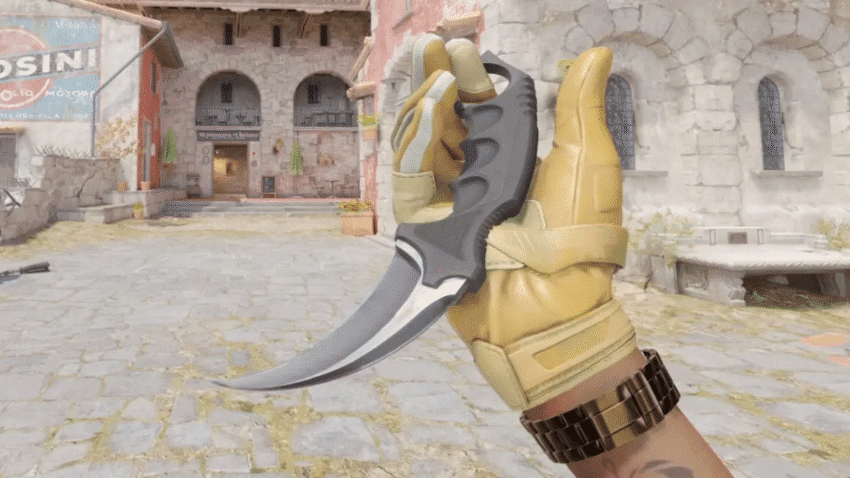
valve upends the cs2 item marketplace with Valve has introduced a significant update to Counter-Strike 2 that has dramatically altered the in-game item marketplace.
valve upends the cs2 item marketplace with
Overview of the Update
On Wednesday night, Valve released what it termed a “small update” for Counter-Strike 2, a game that has captivated millions of players worldwide. While the game is often perceived as a straightforward first-person shooter, it has also evolved into a complex ecosystem where players engage in the buying, selling, and trading of rare in-game items. This marketplace has become a multi-billion-dollar industry, with players often flipping items for substantial profits on the Steam Marketplace.
Introduction of Trade Up Contracts
The centerpiece of this update is the introduction of “Trade Up contracts.” This new feature allows players to exchange five common “Covert” items, colloquially referred to as “reds,” for more desirable items such as knives and gloves. Prior to this update, acquiring these sought-after items was a challenging endeavor, often requiring significant investment or luck in loot drops.
Mechanics of Trade Up Contracts
Trade Up contracts function by allowing players to combine five items of lower value to receive one item of higher value. This mechanic not only incentivizes players to engage more deeply with the game but also introduces a new layer of strategy in item collection. Players must carefully consider which items to trade up, as the outcome can significantly impact their inventory and potential profits.
Market Reactions
The immediate aftermath of the update has been nothing short of chaotic for the Steam Marketplace. Prices for various items have fluctuated dramatically. For instance, one rare knife that was valued at over $14,000 less than 24 hours prior to the update saw its minimum price drop by over 50%. This steep decline illustrates the volatility that can accompany changes in game mechanics, particularly in a marketplace driven by player demand and rarity.
Impact on Item Values
As the update rolled out, the median sale price for common items also experienced significant changes. A common P90 Asimov, for example, surged from a mere $10 to over $100 shortly after the update was implemented. Such price swings highlight how quickly the marketplace can react to new features, particularly those that alter the perceived value of items.
Price Tracking and Market Analysis
Market analysis tools such as Pricempire have been instrumental in tracking these price changes. These platforms provide real-time data on item values, allowing players to make informed decisions about buying, selling, or trading their in-game assets. The volatility seen in the wake of the Trade Up contracts has likely led many players to reassess their strategies in the marketplace.
Community Reactions
The community’s response to the update has been mixed. Some players welcome the new Trade Up contracts as a way to enhance their gaming experience and provide more opportunities for profit. Others, however, express concern over the potential for market saturation and the devaluation of rare items. The fear is that as more players engage in Trade Up contracts, the rarity of certain items may diminish, leading to a less vibrant marketplace.
Concerns Over Market Saturation
Market saturation is a legitimate concern in any trading environment. If too many players begin to trade up common items for rare ones, the supply of those rare items could increase, leading to a decrease in their value. This could create a cycle where players feel compelled to trade up more frequently, further exacerbating the issue. The long-term implications of this trend remain to be seen, but it is a topic of active discussion among players and market analysts alike.
Implications for Future Updates
Valve’s decision to introduce Trade Up contracts may set a precedent for future updates in Counter-Strike 2 and other games within the franchise. The company has a history of evolving its games based on player feedback and market trends. As such, it is likely that Valve will continue to explore new ways to engage players and enhance the in-game economy.
Potential for New Features
Looking ahead, players may anticipate additional features that further integrate trading and item collection into the gameplay experience. This could include new types of contracts, enhanced trading options, or even seasonal events that introduce limited-time items. Each of these possibilities could have profound effects on the marketplace and the overall player experience.
Conclusion
Valve’s recent update to Counter-Strike 2 has undeniably shaken up the in-game item marketplace. The introduction of Trade Up contracts has created new opportunities for players while also raising questions about the future of item values and market dynamics. As the community continues to react and adapt to these changes, it will be interesting to observe how the marketplace evolves in the coming weeks and months. The balance between player engagement and market stability will be crucial in determining the long-term success of this update and any future enhancements Valve may implement.
Source: Original report
Was this helpful?
Last Modified: October 23, 2025 at 10:36 pm
2 views















